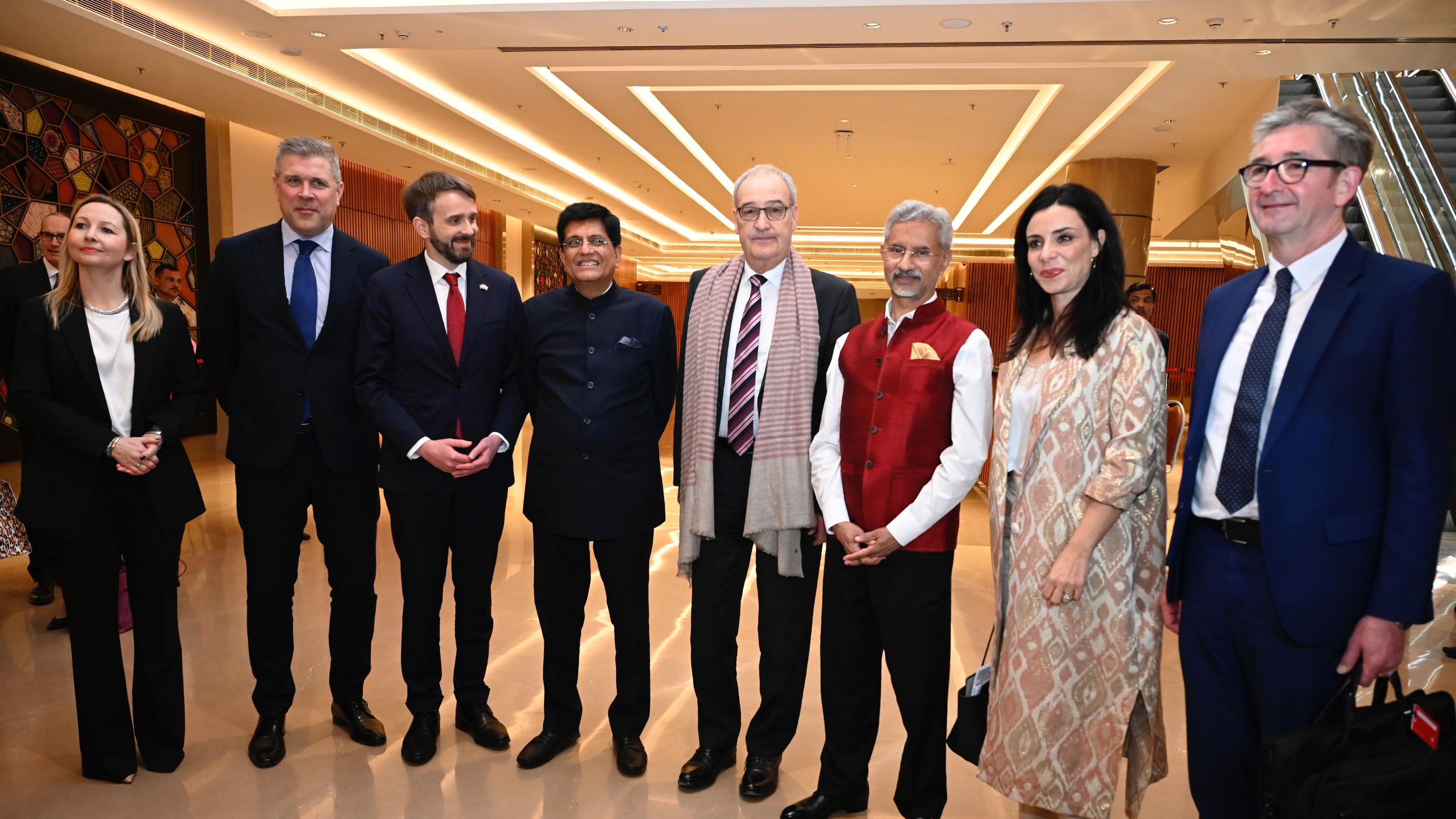
Under the agreement, the EFTA states aim to increase their FDI in India by $50 billion within 10 years and an additional $50 billion in the succeeding five years.
Credit: X/@PiyushGoyal
After 15 years of negotiations, on March 10, India finally signed a Trade and Economic Partnership Agreement (TEPA) with the European Free Trade Association (EFTA). The EFTA today includes four non-EU countries — Iceland, Liechtenstein, Norway, and Switzerland.
The agreement has been concluded after 21 rounds of negotiations. It is a comprehensive agreement covering trade in goods and services, strong rules of origin clause, intellectual property rights (IPR), investment promotion, government procurement, competition, sustainable development as well as labour issues, human rights, and dispute settlement mechanisms.
In addition to bolstering trade, investment, and mobility opportunities with the EFTA nations, the TEPA could serve as a model for two ongoing trade agreements under negotiation — one with the European Union, and another with the United Kingdom.
Last year, India’s trade with the EFTA nations was around $19 billion. Out of which about $13 billion was just gold imports from Switzerland. Since no real tariff benefits are offered on gold, the impact is going to be on the remaining $6-7 billion bilateral trade.
India exported goods worth $2 billion to the EFTA nations, mainly chemicals, gems and jewellery, machinery, and textiles. As tariff rates in the EFTA are already very low, the main impact is likely to be on imports. India has offered 83 per cent of its tariff lines while the EFTA’s offer is for 92 per cent of its tariff lines. India has kept many sensitive agricultural products, such as dairy, soya, and coal, to name a few, on the exclusion list.
Indian consumers may benefit from lower prices on seafood such as tuna and salmon; Swiss chocolate, biscuits, watches, medical equipment, and energy drinks. Some real benefits may be in certain medicines, minerals, dyes, and machinery equipment. No duty concessions are offered on wines costing less than $5. The agreement also includes detailed safeguard measures, trade remedies, and review clauses.
The major sectors in services include financial, telecommunication, movement of natural persons (Mode-4), recognition of qualifications of service suppliers, and maritime personnel. Different provisions in the agreement provide improved market access by guaranteeing a level playing field to both parties regarding regulatory and information transparency, licensing, and application procedures.
The EFTA companies have invested about $11 billion in India in the last 20 years. Out of which, about $10 billion was only from Switzerland. Besides, Norway’s Sovereign Wealth Fund (Pension Fund Global) has also invested about $24 billion in 461 Indian stocks. Indian holdings are just 1.5 per cent of its total global portfolio. In 2023 alone, the fund invested $841 million in Indian stocks. The top five Indian holdings include Reliance Industries, HDFC Bank, ICICI Bank, Infosys, and Axis Bank. It has also recently invested $100 million in Jio Financial Services.
Under the agreement, the EFTA states aim to increase their FDI in India by $50 billion within 10 years and an additional $50 billion in the succeeding five years. This investment is expected to create an additional 1 million jobs in India. A consultation process will be initiated if investment goals are not achieved within a 15-year timeframe.
The labour commitments include not just ‘freedom of association and the effective recognition of the right to collective bargaining’ but also the elimination of all forms of forced or compulsory labour; the effective abolition of child labour; and elimination of discrimination.
The India-EFTA deal cannot be an isolated affair. Ultimately, it must be linked with the India-EU FTA. Except Switzerland, other three EFTA nations are part of the European Economic Area (EEA) which allow the free movement of goods, capital, services, and persons within the EU single market. Switzerland has also achieved these linkages through bilateral deals with the EU. They are all also part of the Schengen area.
The India-EFTA deal in the absence of India-EU FTA may create distortions. The TEPA has provided a good framework of India’s ambitions and limitations in goods, services, and IPR. For the EU deal, more clarity may be needed in investment and public procurement sectors.
(Gulshan Sachdeva is Professor, Centre for European Studies, and Co-ordinator, Jean Monnet Centre of Excellence, Jawaharlal Nehru University. Views are personal.)
Disclaimer: The views expressed above are the author's own. They do not necessarily reflect the views of DH.